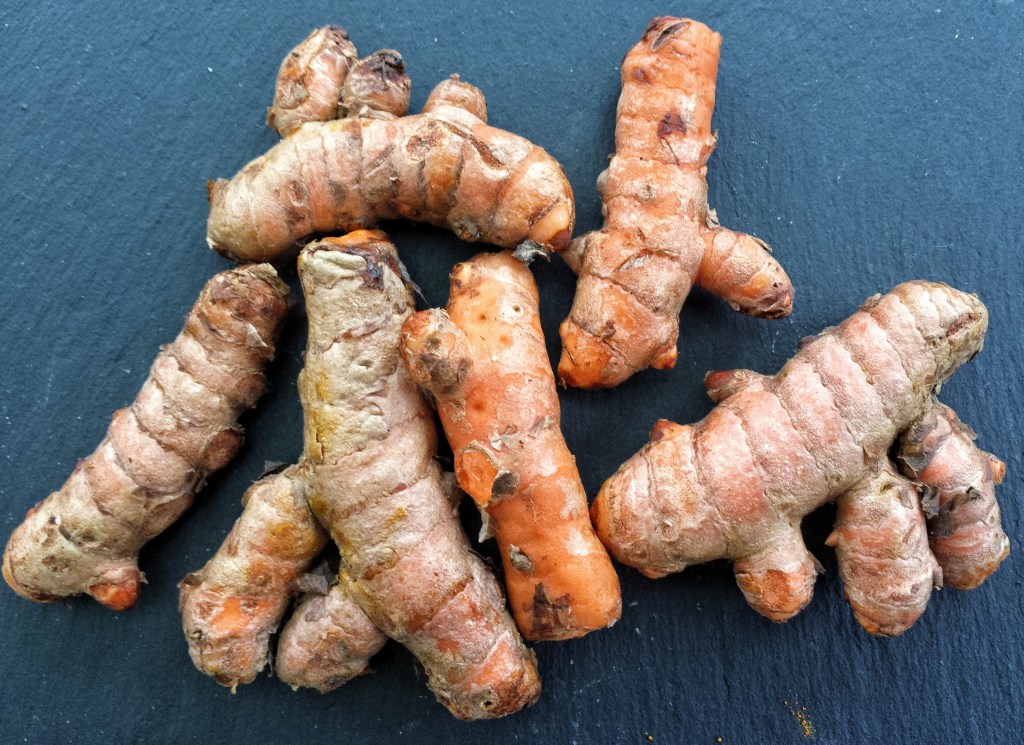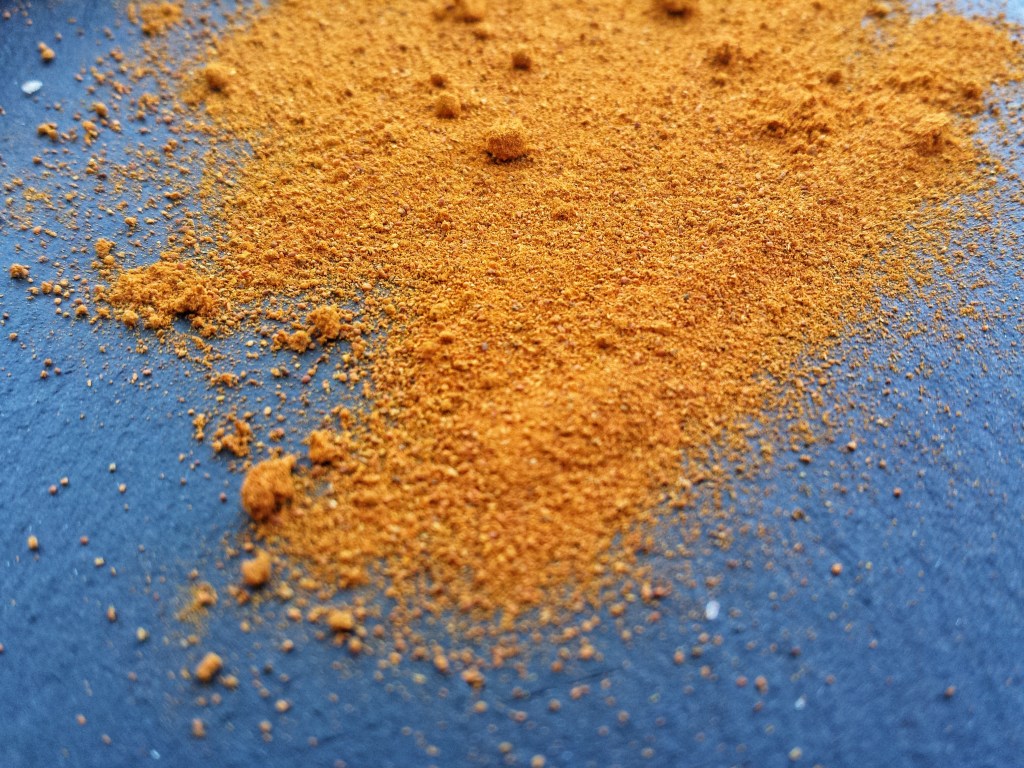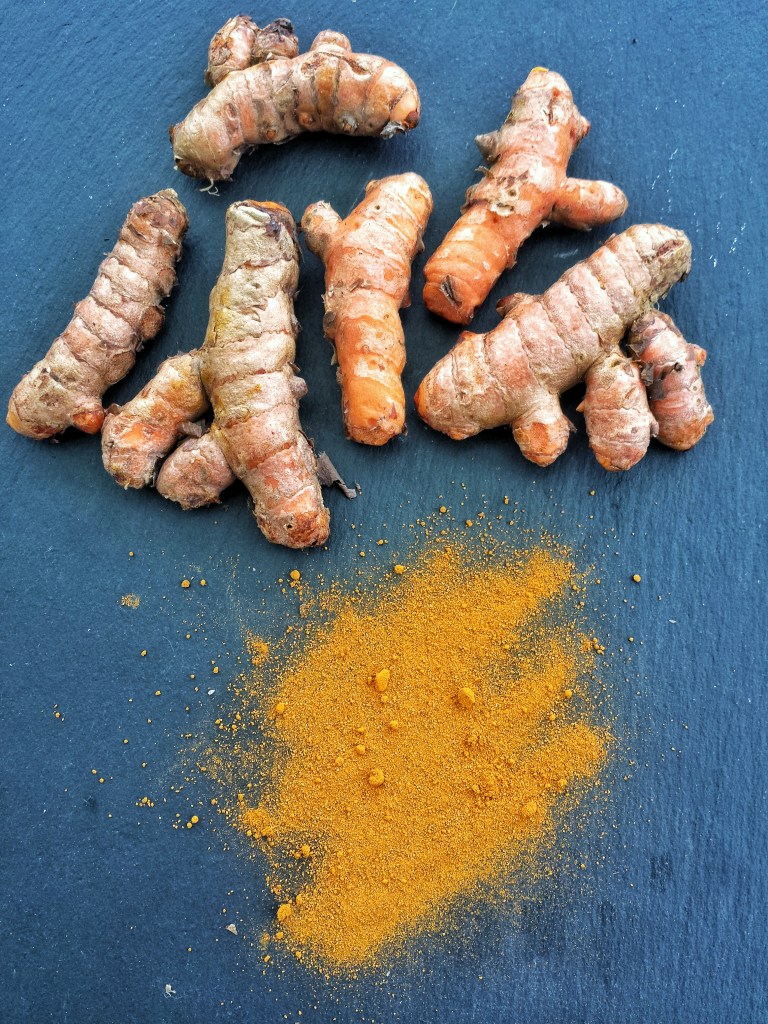Every time I travel there, I bring back lots of things. Usually it’s food. This time wasn’t an exception, so I am forever grateful to Thai Airways who increased their checked-in baggage allowance to 30 kg
So, I bought a box in Post Office in Samui and filled it with tons and tons of spices and enormous amount of Thai mangoes which were in season and are probably my favourite fruits in the world!
One of the spices I always bring back is turmeric. For some reason fresh turmeric is quite expensive in UK, and not easy to find. It keeps well in the fridge too, so I brought a couple of kilos.
In case you haven’t used turmeric before, I tell you a bit more about it, because turmeric is something which
ABSOLUTELY HAS TO BE IN YOUR FOOD EVERY DAY, better a few times a day…
Turmeric (or Curcuma as it is called in some countries) is a spice that comes from the turmeric plant. It is commonly used in Asian food. You probably know turmeric as the main spice in curry.
The root of turmeric contains a yellow-coloured chemical called curcumin, and this magic ingredient has also been used for centuries for medicinal purposes. In numerous studies, curcumin’s anti-inflammatory effects have been shown to be comparable to the drugs such as hydrocortisone as well as over-the-counter anti-inflammatory medicines.
Turmeric contains a wide range of antioxidant, antiviral, antibacterial, antifungal, anticarcinogenic, antimutagenic and anti-inflammatory properties.
It is also loaded with many healthy nutrients such as protein, dietary fibre, niacin, Vitamin C, Vitamin E, Vitamin K, potassium, calcium, copper, iron, magnesium and zinc. Due to all these factors, turmeric is often used to treat a wide variety of health problems.

Here is a long list from webmd.com which tells you what it can be used for:
Turmeric is used for arthritis, heartburn (dyspepsia), joint pain, stomach pain, Crohn’s disease and ulcerative colitis, bypass surgery, hemorrhage, diarrhea, intestinal gas, stomach bloating, loss of appetite, jaundice, liver problems, Helicobacter pylori (H. pylori) infection, stomach ulcers, irritable bowel syndrome (IBS), gallbladder disorders, high cholesterol, a skin condition called lichen planus, skin inflammation from radiation treatment, and fatigue.
It is also used for headaches, bronchitis, colds, lung infections, fibromyalgia, leprosy, fever, menstrual problems, itchy skin, recovery after surgery, and cancers. Other uses include depression, Alzheimer’s disease, swelling in the middle layer of the eye (anterior uveitis), diabetes, water retention, worms, an autoimmune disease called systemic lupus erythematosus (SLE), tuberculosis, urinary bladder inflammation, and kidney problems.
People apply turmeric to the skin for pain, ringworm, sprains and swellings, bruising, leech bites, eye infections, acne, inflammatory skin conditions and skin sores, soreness inside of the mouth, infected wounds, and gum disease. Turmeric is also used as an enema for people with inflammatory bowel disease.
Epidemiological studies have linked the frequent use of turmeric to lower rates of breast, prostate, lung and colon cancer; laboratory experiments have shown curcumin can prevent tumors from forming. It helps to stop the growth of existing cancer and even destroy cancer cells. The active components in turmeric makes it one of the best protectors against radiation-induced tumors. It also has a preventive effect against tumor cells such as T-cell leukemia, colon carcinomas and breast carcinomas.
Research presented at a conference on childhood leukemia, held in London, provides evidence that eating foods spiced with turmeric could reduce the risk of developing childhood leukemia. The incidence of this cancer in children has risen dramatically by more than 50% since 1950, due to modern environmental and lifestyle factors. Childhood leukemia is much lower in Asia than Western countries, which may be due to differences in diet, one of which, the frequent use of turmeric.
Another very important benefit of turmeric is that turmeric’s antibacterial, antiviral and antifungal agents help stimulate and strengthen the body’s immune system. A strong immune system protects you from suffering from colds, flu and coughs. If you do get a cold or the flu, you can feel better sooner by mixing one teaspoon of turmeric powder in a glass of warm almond milk and drinking it once or twice daily.

How to include turmeric in your daily diet?
Well, I always add it to the smoothies, soups, stews and curries. If I have a fresh turmeric, I always put 1 cm of its root in my smoothie. But be careful do not go overboard with turmeric, as your smoothie may have a strong turmeric taste. 1 cm is enough. And the powdered turmeric goes into the hot food, usually 1/2 to 1 teaspoon to the pot of hot food.
Using turmeric in your food a few times a week is a great way to get your dose of curcumin, in normal circumstances. But always add black pepper to your recipe, as black pepper helps to increase the bioavailability of the curcumin, meaning that it’s more effective for you.
For a general anti-oxidant health boost, add ½ teaspoon of powdered, organic turmeric, with a pinch of ground black pepper to your food.
When it comes to curcumin supplements, some of my favourites are Phyte-Inflam from Cytoplan, Curcumin from Together, Curcumin Ultra from Lamberts and Wholistic Turmeric from Pukka. You can buy them in the good health shops, online or contact me for special practitioner’s discounts as they are not cheap due to they high quality.


